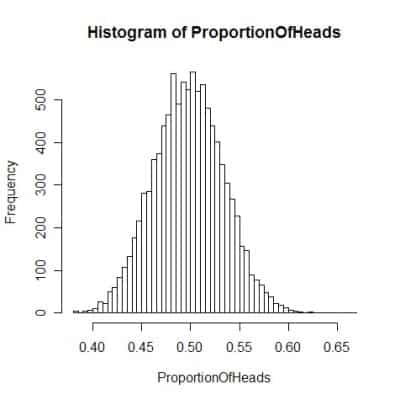As a math major in college, one of my professors gave a talk on prospective careers for math students. He mentioned the actuarial profession and said it was a terrific profession for math-minded individuals.
Back then, many of us didn’t even know what an actuary was! We learned that actuaries use math and statistics to predict the likelihood of future events.

The idea intrigued us. Do people actually do this for a living? It turns out that, yes, people do this for a living! If you’re great at math, an actuarial job may be for you!
Let’s look a little more closely at the actuarial profession and see what kind of math is involved in this job.
What is an actuary?
An actuary is a skilled professional who helps businesses determine the risk of certain events happening in the future. Actuaries use statistics to determine the probability of events occurring and they also help to predict the timing of such events.

They assist companies in managing their finances so the companies know how much money they need to set aside in order to cover the future costs should certain events occur. Actuaries use statistics as well as complex math calculations to determine how much companies need to save/invest to cover their costs.
(Source: etchedactuarial.com)
What kind of companies hire actuaries?
Insurance companies hire actuaries since, for the most part, the bulk of their business is based on the likelihood of future events. For example, actuaries help insurance companies determine the premiums that should be charged for a life insurance policy.
They use risk analysis to determine how likely it is that the life insurance policy will be paid out during the term of the policy and they also predict when a life insurance policy will be paid out. While it would be foolish to make such predictions for an individual, actuaries can rely on the Law of Large Numbers to make predictions for groups of people.

For example, they can use life expectancy data to make a reasonable prediction for the life expectancy of non-smokers with no family history of cancer who purchase life insurance in their early thirties. By using statistics and evaluating data, actuaries can determine the life insurance premium an insurance company will need to charge its customers.
Actuaries also work with banks and financial institutions by helping them evaluate the risks of certain investments. And, they help consulting firms with pension and benefit planning by determining how much money needs to be set aside to pay out a pension to an employee when they reach retirement age.
How does a person become an actuary?
Should you decide to become an actuary, there are actually two different professional organizations to help you along that path: the Casualty Actuarial Society (CAS) and the Society of Actuaries (SOA).
Both of the organizations offer an Associate and a Fellow designation.The main difference between the two organizations is the industries that they support.
The CAS certifies those who plan to work in the property and casualty side of things, which includes things like auto, home, and commercial insurance.
The SOA is for those who intend to work in life insurance, health insurance, retirement benefits, or finance.
The pathways are similar, requiring lots of exams along the way. (Source: US of Bureau of Labor Statistics)
It’s a pretty long haul to become an actuary, though the good news is that you can work full-time while pursuing that goal.To attain one of the professional designations, candidates need to complete a series of exams.
In order to become a Fellow, one must first become an Associate. There are different options within each designation depending on what you’d like to specialize in.
Of note, many universities now offer an undergraduate degree in actuarial sciences. Before pursuing this as a degree, be aware that it is a highly specialized degree.
You need to be certain that becoming an actuary is right for you. Many future actuaries major in math, statistics, economics, or finance. So, it’s not necessary to major in actuarial sciences as an undergraduate.
How long does it take to become an actuary?
Typically, to become an Associate Actuary (ACAS or ASA), it takes about seven years because of all the exams and preparation that’s required. Earning the Fellow designation takes another few years.
Keep in mind that you’re earning a salary during that time (unless you’re in college while taking some of the first exams). And, companies offer paid study time to help employees pass the exams.

The actuarial exams are difficult. The pass rate for each exam is typically under 50%. A general rule of thumb is that you should plan to study 100 hours per hour of exam time. That’s a LOT of studying!
Of course, that will vary depending on how familiar you already are in the subject area. For example, candidates pursuing an Associate position through the SOA must pass Probability Exam P, which is a 3-hour exam. That equates to 300 hours of study time.
If you already know probability really well, you likely won’t need to study that long but you get the idea. Undoubtedly, some of the exams will be more difficult than others depending on your strengths and weaknesses.
Some actuaries suggest that you should start studying for a particular exam about 4-5 months before the test date. Need an added incentive to pass on your first try? Companies usually give salary increases for each passed exam! That’s a good deal!
Sample Probability P question (Source: beanactuary.org)
A survey of a group’s viewing habits over the last year revealed the following information:
- 28% watched gymnastics
- 29% watched baseball
- 19% watched soccer
- 14% watched gymnastics and baseball
- 12% watched baseball and soccer
- 10% watched gymnastics and soccer
- 8% watched all three sports.
Calculate the percentage of the group that watched none of the three sports during the last year.
- A. 24
- B. 36
- C. 41
- D. 52
- E. 60
Solution
Venn Diagrams are the way to go here! Start with the innermost section of the diagram which represents the percentage of people who watched all three sports – label this section with “8.”
Now, let’s fill in the sections of the Venn diagram that represent the overlap of viewers who watched two sports. For example, since 14% of the surveyed viewers watched both gymnastics and baseball, we know the football-shaped region representing the overlap of these two sports must add to 14%.
Since 8% is part of that football-shaped region, subtract 14 – 8 = 6 to get the number of viewers who watched both gymnastics and baseball but did not watch soccer. Label the diagram accordingly.
Similarly, we can figure out the percentages for the other two-sport regions. Our Venn diagram now looks like this:
Using a similar process, let’s fill in the remaining sections of the Venn diagram.
Finally, we’re asked what percentage of viewers watch none of these sports. to figure this out, add up all of the numbers in the sections of the Venn diagrams, and subtract that total from 100%.
The total of all the sections in the Venn diagram is 48%. Subtracting, we obtain:
100-48=52
Thus, 52% of surveyed viewers watched none of the sports. The correct answer is Choice (D).
Sample Problem 2
An urn contains 10 balls: 4 red and 6 blue. A second urn contains 16 red balls and an unknown number of blue balls. A single ball is drawn from each urn. The probability that both balls are the same color is 0.44.
Calculate the number of blue balls in the second urn.
- A. 4
- B. 20
- C. 24
- D. 44
- E. 64
Solution
A tree diagram is the best approach here. Draw out the situation.
Since selecting a ball from the first urn is independent from selecting a ball from the second urn, we can multiply the probabilities on each branch of the tree to figure out the probabilities of each outcome. Let x be the number of blue balls in the second urn.
Hence, the total number of balls in urn 2 is 16 + x. Here is the completed tree diagram:

Notice that there are four possible outcomes, but we’re only interested in the probabilities for the two outcomes where both balls are the same color. In order to find x, we can add the probabilities for the outcomes RR and BB, and set the sum equal to 0.44. We have:
[64/(160+10x)] + [6x/(160+10x)] = 0.44
(64 + 6x)/(160+10x) = 0.44
64+6x = 0.44(160+10x)
64+6x=70.4+4.4x
1.6x=6.4
x=4
There are 4 blue balls in the second urn. The correct answer is Choice (A).
Other situations where actuaries are used
There are many situations in the real world where actuaries are used. The Casualty Actuarial Society and the Society of Actuaries have a website with a pretty cool Interactive photo with touch points to see where actuaries are used out there in the real world. Check it out: Be an Actuary.
Actuaries are used in all kinds of situations including:
- Business leaders – companies turn to actuaries to help navigate health and financial crises as well as natural disasters. The world is ever changing – actuaries can help businesses manage all of the change!
- Automobile insurance premiums – when gas prices go up, people drive less frequently and don’t travel as far, thereby decreasing the number of car accidents. This is something actuaries take into account when assessing risk and determining automobile insurance premiums.
- Extended warranties – have you purchased an appliance lately? If so, it came with a warranty in case the appliance breaks down. Actuaries help determine how likely it is that the appliance will break down so the companies offering the warranties can build in the cost of a replacement.
- Climate change – actuaries help companies determine how climate change can impact their risks and possibly expose them to liability. Already, some businesses are affected by climate change. Here in New England, warmer winters and less snow impacts the ski resorts in a negative way. The farming industry is also affected – frost warnings in the middle of May can damage crops. Farmers have to be ever vigilant of the changing weather patterns.
- Pet insurance – actuaries help determine insurance products for pets so that if your guinea pig needs eye surgery or if your cat needs a few teeth extracted, you can manage the cost because of your pet insurance policy!
Consider this – if you’re great at math or have a knack for finances, an actuarial career may be ahead of you! Bonus: it pays pretty well with relatively low stress!
I hope you found this article helpful. If so, please share it with someone who can use the information.
Don’t forget to subscribe to our YouTube channel & get updates on new math videos!
About the author:
Jean-Marie Gard is an independent math teacher and tutor based in Massachusetts. You can get in touch with Jean-Marie at https://testpreptoday.com/.


